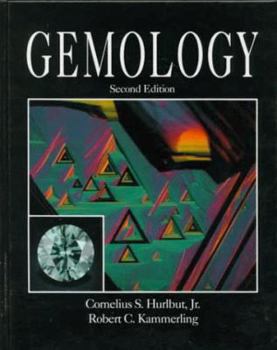Gemology
Select Format
Select Condition 
Book Overview
This edition has been revised and expanded to reflect recent and varied developments in the highly specialized field of gemology. Among these are: gemstone synthesis; imitation gems; the alteration of gems to improve, add, remove or otherwise change their color, phenomena or clarity; the importance and widespread uses of the microscope to reflect the aforementioned developments; and a number of new gem minerals or new forms of previously described minerals recently discovered or actively marketed for the first time. The chapter on Descriptive Gemology has been divided into two groups: important gemstones (those gem materials most widely used in jewelry and ornamental objects) and less important gemstones (those less commonly encountered).
Format:Hardcover
Language:English
ISBN:0471526673
ISBN13:9780471526674
Release Date:January 1991
Publisher:Wiley-Interscience
Length:352 Pages
Weight:1.90 lbs.
Dimensions:0.9" x 7.8" x 9.5"
Customer Reviews
3 ratings
Does anyone...
Published by Thriftbooks.com User , 17 years ago
Does anyone know how Robert C. Kammerling died or where I could find information on him??? I knew him but only for 1 year and i am trying to figure out more about him. I have heard that this book is very helpful and is one of the best books on gemology.
Classic Text which is the basis of GIA classification
Published by Thriftbooks.com User , 18 years ago
Cornelius Hurlbut (1906 ,2005) a Harvard University Geologist and Robert Kammerling (c1947, 1996) of the Gemological Institute of America wrote an excellent text on Gem Identification. The book became the basis of the GIA course of colored stones and colored stones identification which are required for the GIA Graduate Gemologist designation. Chapters 1-7 give basic facts on origin of gems, crystallography, chemical formulas, physical properties (hardness, specific gravity, heat conductivity), colors and optical properties. Chapters 6-7 also discuss equipment used in gem identification (specific gravity scales, heat testers, refractometer, reflectivity meters, polariscope, condensing sphere). The most important gem identification instrument is the refractometer and the authors give a detailed discussion of its uses which nicely supplements the GIA `lab manual'. Chapter 8 and 9 discuss the microscope and loupe and the spectrophotometer. Chapter 11 discusses synthetic stones (which have the same chemical, optical, and physical properties of the natural stones) and imitation stones (which merely resemble the natural stones.) The other chapters discuss enhancement, fashioning and the properties of stones on the GIA gem identification "a" and "b" lists. Ph.D. GG (GIA)
An excellent reference source
Published by Thriftbooks.com User , 24 years ago
This book is an excellent source of information for people interested in the field of gemmology. I have found that the contents covers a wide range of topics and presented in an easily understood format. It is a concise and well-illustrated book which makes it ideal as a reference book






